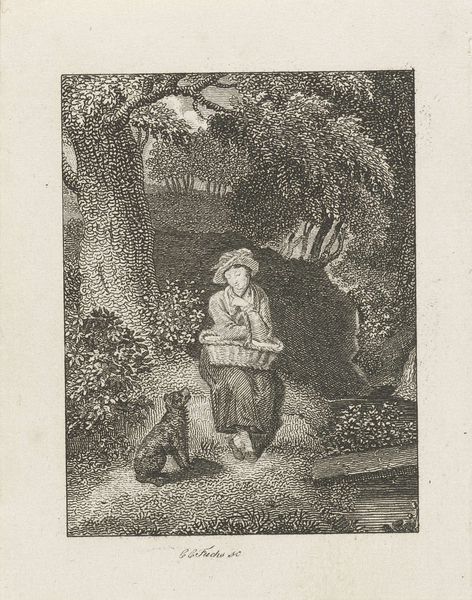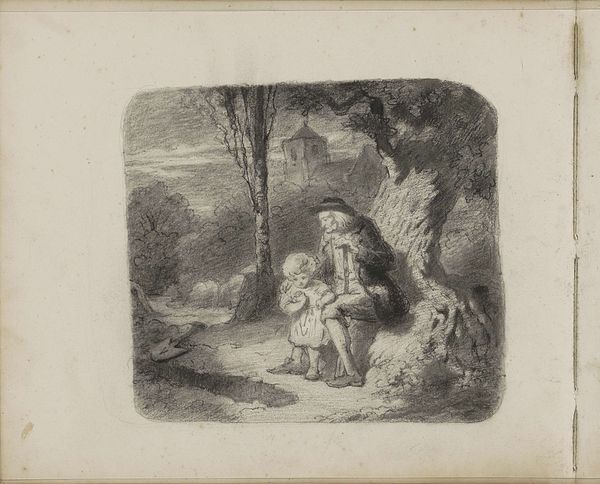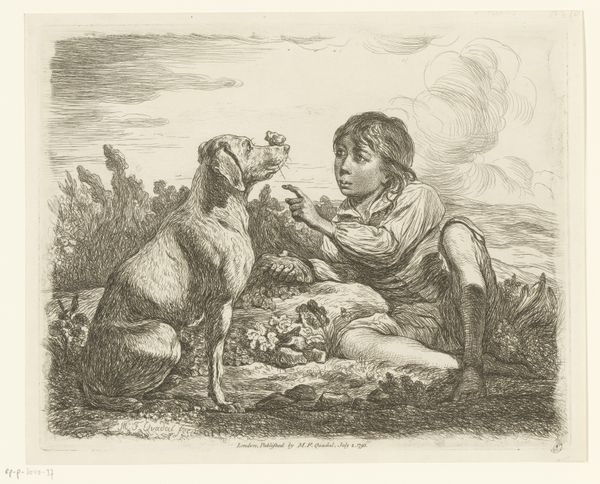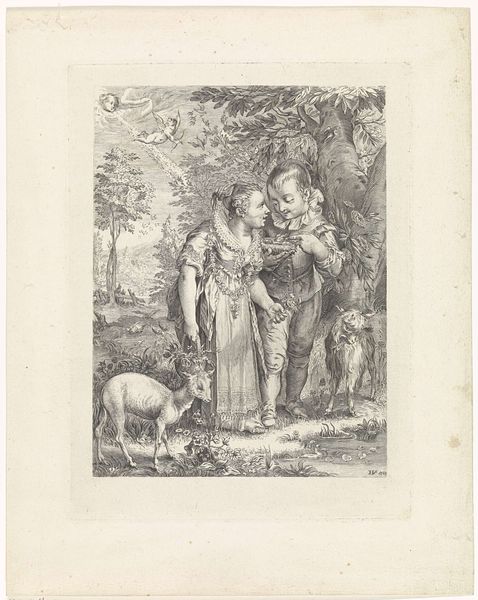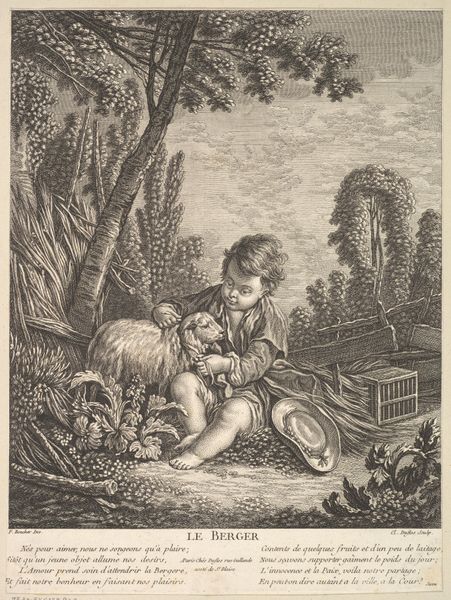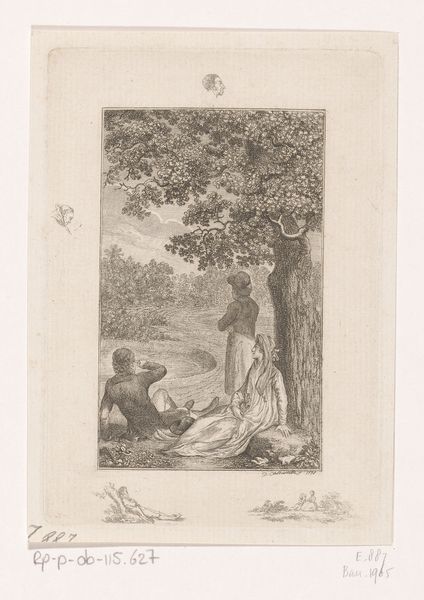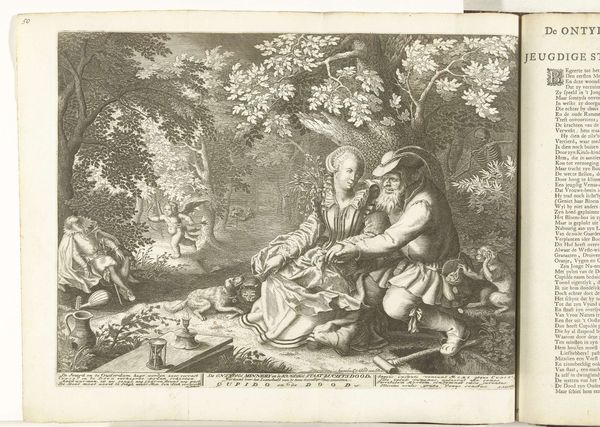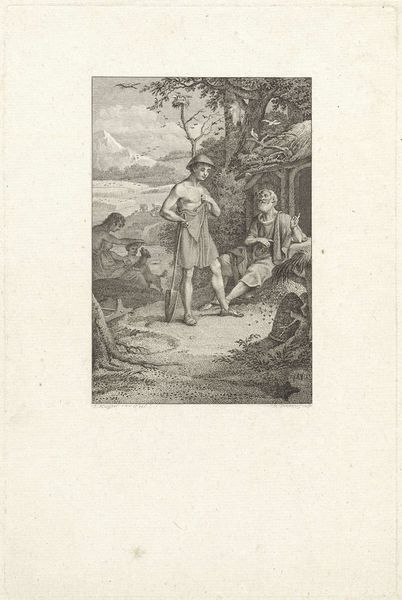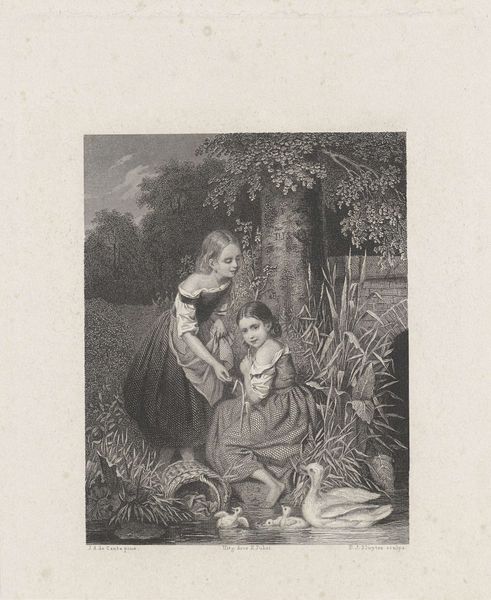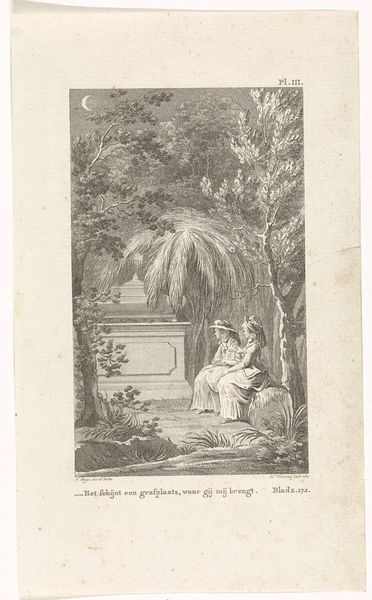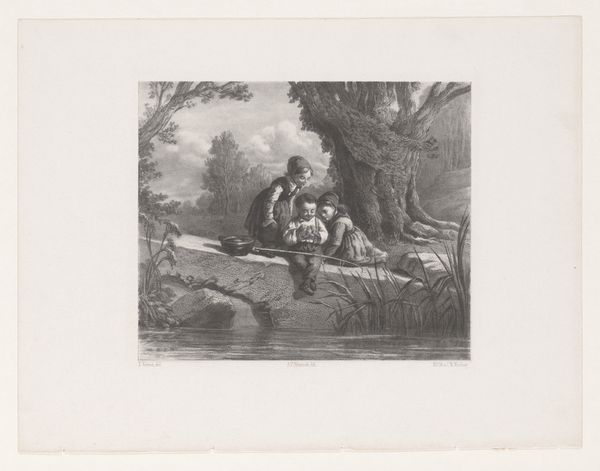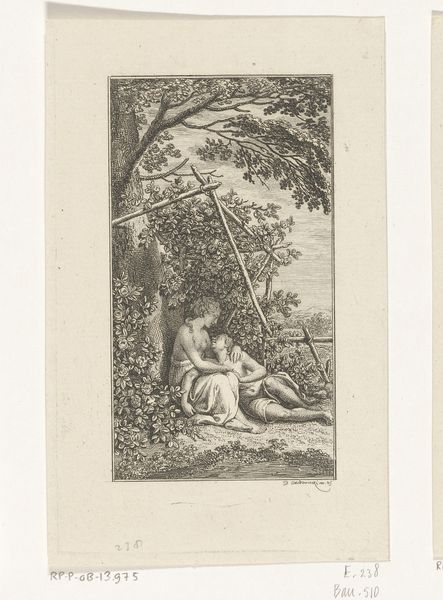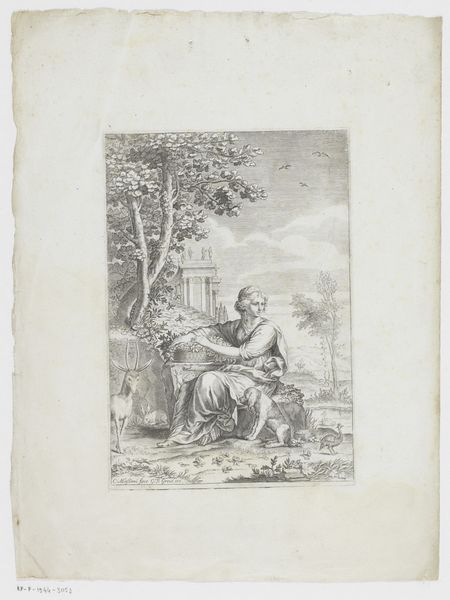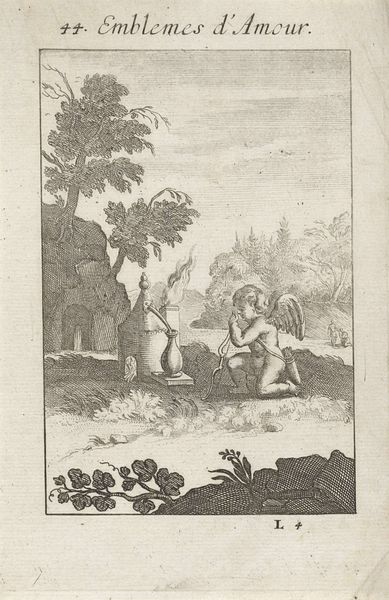
print, engraving
# print
#
old engraving style
#
landscape
#
figuration
#
romanticism
#
genre-painting
#
engraving
Dimensions: height 110 mm, width 70 mm
Copyright: Rijks Museum: Open Domain
Curator: Let's take a look at Jan Baptist Tetar van Elven's "Korenoogst", which translates to "Harvest" or "Grain Harvest", an engraving from 1838, housed here at the Rijksmuseum. Editor: It has a quiet, almost melancholic feel to it, doesn't it? The subdued monochrome palette, combined with the somewhat weary expressions of the figures... It hints at the hardships of rural life. Curator: Note the precision of the lines in this engraving, typical of the Romantic period's idealization of landscape. Look closely at the cross-hatching, see how van Elven creates tonal depth and textures - from the wispy clouds to the rough bark of the tree. Editor: It's a meticulously crafted scene, but the figures strike me the most. Their clothing seems simple and functional, reflecting their labor. Are we romanticizing peasant life or realistically showing how they scrape a living? The figure burdened by the sheaves on their head - who carries that load? Curator: Observe the triangular composition with the tree and the resting figure creating balance. Semiotically, we read the wheat sheaves as symbols of bounty and sustenance, but the relaxed poses complicate this idea. The dog may point to ideas around fidelity or domestic tranquility, adding another layer. Editor: I can’t shake the thought that while there is beauty here, a certain exploitation is inherent. The woman is standing, almost ready to head back to work, while the man is at rest. Look, even their relative location seems staged. Curator: Yet, there’s also a sense of community suggested. The subtle landscape in the background suggests other laborers, indicating a world of agricultural cycles that continue through hard circumstances. Editor: Thank you. Your description of the tonal variation helped bring the subjects of exploitation into a new form, one in which people lived through hardships, yes, but as part of a strong collective. Curator: And seeing this romantic style in combination with harsh historical and social conditions helps one understand a different kind of wealth --the natural capital of an agricultural system in tension. Editor: I came into this with very different opinions about beauty, exploitation, and work, but now seeing the scene as one defined by both struggle and endurance opens many more doors for inquiry.
Comments
No comments
Be the first to comment and join the conversation on the ultimate creative platform.
